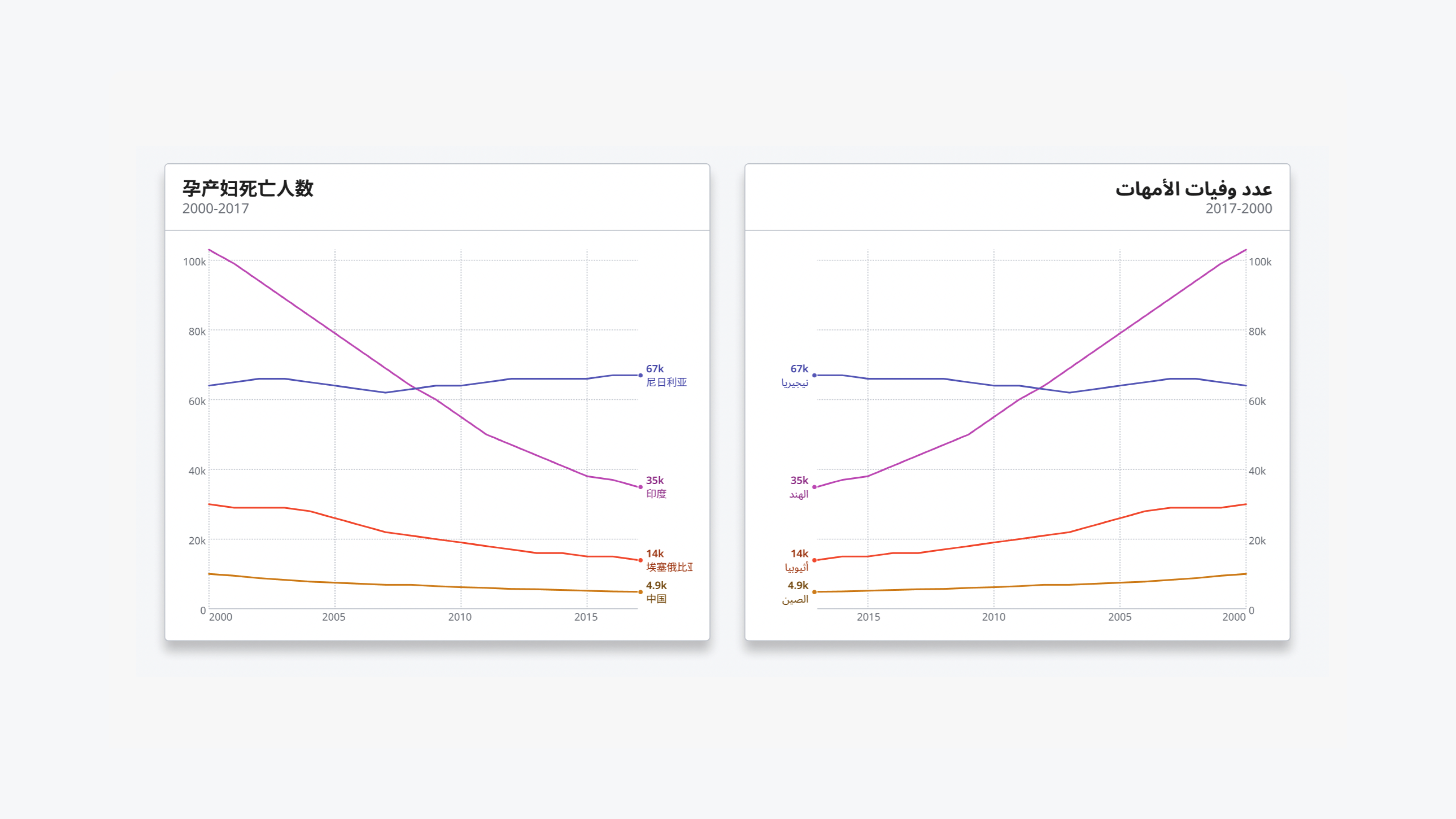WHO Data Design Language
Posted by Armando Brito Mendes | Filed under visualização
Uma linguagem para desenho de dados
Rich data experiences for public health data
Developed for the data.who.int — the new home for WHO’s public health data — the WHO Data Design Language defines building blocks and techniques for creating rich, informative, accessible and equitable information experiences.
Team: Alice Thudt, Christian Laesser, Moritz Stefaner with Philippe Rivière, Sarah Fossheim, Maarten Lambrechts, with Mathias Schäfer, Leif Rothbrust, Philipp Doll and Matt Hollidge, Fred Wheeler, Yaseed Chaumoo.
Tags: cores, data design language
the pudding
Posted by Armando Brito Mendes | Filed under materiais ensino, materiais para profissionais, visualização
Um bom exemplo de uma história bem contada, neste caso, sonora.
Hola y bienvenido.
This is an audio/visual story exploring the sounds of Mexico City’s streets.
To begin, please connect headphones and choose a language.
Where is there more livestock than people?
Posted by Armando Brito Mendes | Filed under Data Science, data sets, mapas SIG's, visualização
Continuing my investigation of the USDA Quickstats site I first used here…
Notes on inspiration
I was first inspired to do this piece when I saw these analogous maps for France:
I figured that the USDA data I’d already been digging into had to have the data for the USA, and in fact, it did!
The data has holes in it–a county may appear one year but not the next. I got around this by using the most recent post-2010 data available for each county+animal type. When comparing these values to the human population, I made sure to use the ACS data for that same year.
The aesthetics came together very quickly. I considered doing the thing as Jules Grandin and keeping the maps ultra simple, but ultimately couldn’t resist showing the animal:human ratios instead of just which counties had more animals.
The first map ended up scratching that “ultra simple” itch, but with a bit of a twist. I chose not to show ratios in that one because it already has so much going on–I think adding in gradients of color just would have made it hard to read. I’m also quite proud of my venn diagram legend there!
Tags: animais, Estat Descritiva, mapas
Midterm elections 2022: The issues that matter to Americans
Posted by Armando Brito Mendes | Filed under Data Science, estatística, infogramas \ dashboards, mapas SIG's, Sem categoria, visualização
Uma boa análise dos termos mais pesquisados por região nos EUA, com mapas.
As the 2022 midterms approach, see which issues people in your congressional district care about
All politics are local.
To identify the most decisive issues for this year’s midterm voters, Axios dug through Google Trends search data in each congressional district.
We are tracking two trends:
- Absolute interest, which ranks the topics people are Googling most in their districts.
- Relative interest, which compares the interest in a topic from one district to another.
For example, people in Montana’s 2nd Congressional District have been searching about “jobs” less frequently than people in most other districts. The topic has low relative interest there. But in the same district, people search “jobs” more than any other topic listed. So “jobs” still comes in as No. 1 for absolute interest.
You can learn more about how we measure absolute interest and relative interest below or scroll down to explore the results on your own.
Tags: EUA, google, termos pesquisados
Drivers race for the 2021 World Championship
Posted by Armando Brito Mendes | Filed under infogramas \ dashboards, visualização
as provas de fórmula 1 analisadas em 3 tipos de gráficos
THUNDERROADS
Drivers race for the 2021 World Championship
Tags: belo, Estat Descritiva, fórmula 1, gráfiocos de linhas
Chroma.js Color Palette Helper
Posted by Armando Brito Mendes | Filed under mapas SIG's, visualização
Uma ferramenta para usar a construir paletas para os seus gráficos
This chroma.js-powered tool is here to help us mastering multi-hued, multi-stops color scales.
How Much Time We Spend Alone and With Others
Posted by Armando Brito Mendes | Filed under Data Science, relatórios, visualização
uma simulação do tempo q passamos com outros durante o dia ilustrada com gráficos de pontos em movimento e gráficos de barras acumuladas.
By Nathan Yau
Oftentimes what we’re doing isn’t so important as who we’re spending our time with. The chart below, based on data from the American Time Use Survey, shows a simulated day for 100 people.
TIME SPENT WITH OTHERS DURING A SINGLE DAY
A simulation of a weekday. Each dot represents a person.
Tags: simulação, single day, tempo de vida
One million of us
Posted by Armando Brito Mendes | Filed under infogramas \ dashboards, relatórios, visualização
Uma história das mortes por COVID nos estados unidos ilustrada com gráficos unitários e de linhas acumuladas.
By Sergio Peçanha and Yan Wu Updated May 18 at 3:00 p.m.Originally published May 12, 2022651
The pandemic’s death toll in the United States has surpassed 1 million people. Conveying the meaning or the magnitude of this number is impossible. But 1 million deaths is the benchmark of an unprecedented American tragedy.
Consider this comparison: The population of D.C. is about 670,000 people. Try to imagine life without every person, in every building, on every street, in the nation’s capital. And then imagine another 330,000 people are gone.
To attempt to put the 1 million deaths in context, we plotted its damage over more than two years and compared the continuing death toll with the tolls from previous catastrophes in our history.
Remembering the lives lost to COVID-19 in America
Posted by Armando Brito Mendes | Filed under Data Science, infogramas \ dashboards, visualização
Na tentativa de mostrar a proporção dos números os autores apresentam uma estória gráfica baseada no tamanho de losângulos
As COVID-19 began to spread in the U.S. in March 2020, Trump administration officials estimated 100,000 to 200,000 Americans might die. A worst-case scenario, they said, meant between 1.6 million and 2.2 million might perish. The figures felt staggeringly high.
Two years later, the U.S. has reached 1 million deaths even as COVID has faded from the headlines.
At this grim milestone, we sought to refocus on the scale of loss suffered. Scroll below to see more.
Tags: belo, séries cronológicas
Who We Spend Time with as We Get Older
Posted by Armando Brito Mendes | Filed under Data Science, estatística, visualização
Um gráfico de barras horizontais animando com variações ao longo do tempo
By Nathan Yau
In high school, we spend most of our days with friends and immediate family. Then we get older and get jobs, get married, and grow our own families to spend more time with co-workers, spouses, and kids. Here’s how things change, based on a decade of data from the American Time Use Survey, from age 15 to 80.
Tags: análise de dados, animação, dinâmico, gráfico de barras






